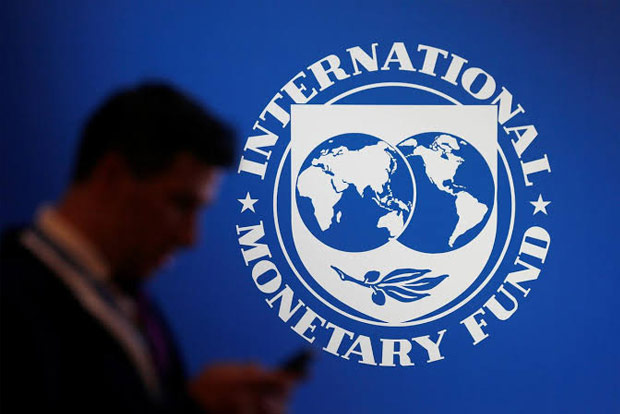ISLAMABAD: Looking at the data for the first quarter of the fiscal year 2023-24 that was released on Wednesday, one could say that the country’s position has improved. The word improved here would mean that the position is not as bad as before, but in no way does it mean that it is good, or even significantly better.
The country has reportedly met the budget deficit targets set by the IMF for the first quarter on the back of heavy taxation and reduced spending. However, there is still a lot to be desired owing to high amounts of debt servicing, interest payments and the ever-so-tightening conditions of the IMF.
Following is a run down of how Pakistan fared in the first quarter?
The Numbers
Pakistan’s budget deficit has surged to Rs 963 billion (0.9 % GDP) during the first quarter of the current fiscal year 2023-24 which is 17% more than that of the same period in FY23.
According to fiscal operation data, the total expenditures for Jul-Sep stood at Rs 3.648 trillion. This included Rs 3.17 trillion in current expenditure, Rs 1.39 trillion in mark-up payments, Rs 343 billion as defence expenditure, Rs 203 billion as pensions, Rs 131.9 billion for running the civil government, 2.49 billion for subsidies and Rs 177.3 billion on the account of grants. The total expenditure was up by 28% compared to the same period last year, whereas current expenditures are up by 23%.
It is also interesting to note here that 38% of the expenditure in the first quarter has been interest (mark-up) payments. An expenditure that is likely to increase further due to the prevailing interest rate and may exceed the budget allocations. This is also equal to 98% of the federal government’s net revenue of Rs 1.4 trillion.
During the first quarter, the development expenditure & net lending stood at Rs 282.387 billion during the first three months. According to the Finance division, Federal PSDP was Rs 40.925 billion and provincial Rs 245.53 billion while statistical discrepancy at Rs 193.563 billion.
Financing of the budget deficit was met through net external borrowing of Rs 425.170 billion and domestic borrowing of Rs 537.631 billion. The primary balance was recorded at Rs 416.811 billion (0.4 percent).
Tax revenue was recorded at Rs 2.216 trillion with federal board of revenue taxes stood at Rs 2.041 trillion with direct taxes of Rs 934.789 billion and indirect taxes of Rs 1.106 trillion which included taxes on international trade (Customs) Rs 252.220 billion, sales tax Rs 726.944 billion, federal excise Rs 127.594 billion. Provincial tax collection was Rs 175.391 billion.
Total non-tax revenue collection was Rs 468.815 billion with federal non tax revenue of Rs 452.069 billion which included mark-up (Provinces) Rs 18.142 billion, mark-up (PSEs & Others) Rs 66.762 billion, dividend Rs 33.816 billion, profit PTA & others Rs 3.581 billion, defence receipts Rs 6.600 billion, passport fee Rs 14.541 billion, discount retained on crude oil Rs6.317 billion, royalties on oil/gas Rs 41.652 billion, windfall levy against crude oil Rs 5.710 billion, petroleum levy on LPG Rs 870 million, gas infrastructure development cess Rs 378 million, petroleum levy RS 222.067 billion and others Rs 32.633 billion and provincial Rs 33.888 billion.
Pakistan has reportedly fulfilled a crucial requirement set by the International Monetary Fund (IMF) concerning the reduction of its budget deficit during the first quarter. This achievement was largely attributed to a 362% increase in petroleum levy collections and significant reductions in federal subsidies and development expenses.
The domestic debt servicing was also recorded at Rs 1.25 trillion, Rs 417 billion or 50% compared to the last fiscal year. The country is now borrowing primarily to meet interest payments. In fact, even the amount of domestic debt servicing exceeds the budget deficit ergo, the debt in this quarter.
The federal government has allocated Rs7.3 trillion for debt servicing, however some officials in the finance ministry have suggested that the cost may exceed Rs8.3 trillion.
Come the IMF:
A delegation from the IMF is scheduled to arrive in Pakistan on November 2 to initiate discussions for the initial review, and the successful conclusion of these negotiations will result in the disbursement of the next loan instalment, amounting to $710 million, in December.
The budget of the first quarter stood at 25.1 % of the approved annual budget of Rs 14.48 trillion. However, past trends suggest that first quarter’s surpluses are turned into deficits in the next quarters. Just last year, Pakistan’s budget deficit for the last quarter was 8 times or 800% more than the first quarter. This means that having consumed one-fourth of the budget, Pakistan is staring down the barrel. It should also not be forgotten that the current fiscal discipline (whatever little there is present) is also expected to go away as soon as an elected government comes into office.




